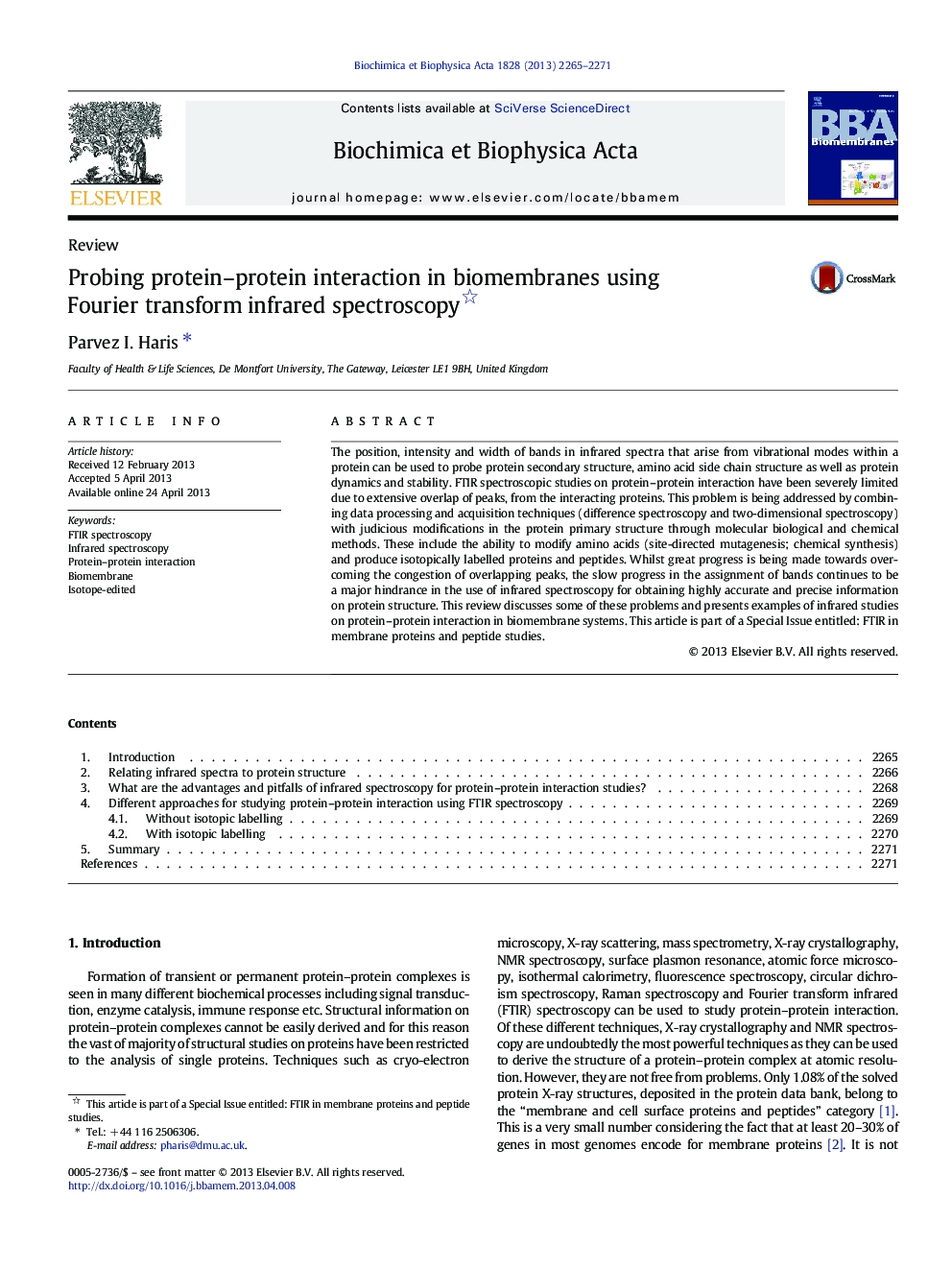| Article ID | Journal | Published Year | Pages | File Type |
|---|---|---|---|---|
| 1944262 | Biochimica et Biophysica Acta (BBA) - Biomembranes | 2013 | 7 Pages |
•Protein–protein interactions in biomembranes can be investigated by FTIR spectroscopy.•Information on secondary structure, amino acid side chains and protein dynamics can be obtained.•Isotopic labelling of one of the interacting proteins reduces infrared band overlap.•Different data processing and acquisition techniques can aid interpretation of spectral data.
The position, intensity and width of bands in infrared spectra that arise from vibrational modes within a protein can be used to probe protein secondary structure, amino acid side chain structure as well as protein dynamics and stability. FTIR spectroscopic studies on protein–protein interaction have been severely limited due to extensive overlap of peaks, from the interacting proteins. This problem is being addressed by combining data processing and acquisition techniques (difference spectroscopy and two-dimensional spectroscopy) with judicious modifications in the protein primary structure through molecular biological and chemical methods. These include the ability to modify amino acids (site-directed mutagenesis; chemical synthesis) and produce isotopically labelled proteins and peptides. Whilst great progress is being made towards overcoming the congestion of overlapping peaks, the slow progress in the assignment of bands continues to be a major hindrance in the use of infrared spectroscopy for obtaining highly accurate and precise information on protein structure. This review discusses some of these problems and presents examples of infrared studies on protein–protein interaction in biomembrane systems. This article is part of a Special Issue entitled: FTIR in membrane proteins and peptide studies.
Graphical abstractInvestigation of protein–protein interaction using infrared spectroscopy. Second derivative spectra of the isolated receptor Ig domain (top panel), G-CSF/Ig complex (middle panel) and the isotope labelled (13C,15N) G-CSF/Ig complex (bottom panel). (Li and Arakawa [29], reproduced with permission of the publishers).Figure optionsDownload full-size imageDownload high-quality image (67 K)Download as PowerPoint slide
